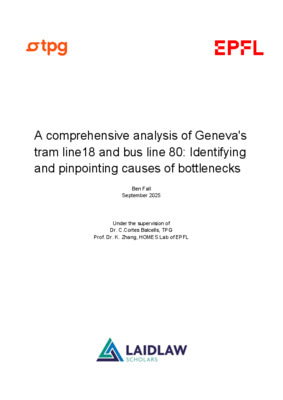About Ben Fall
I am an international Bachelor student reading Communication Systems at EPFL in Lausanne. I am curious and eager to learn across many fields ranging from the sciences to the arts. My core academic interests lie in the physics, chemistry, and mathematics (statistics, data analytics and mathematical modelling) and the way these fields are related in technological advancements through computer science and AI.
I consider myself a global citizen, a French and German national who has lived in France, Germany, the United Arab Emirates and Switzerland and travelled to more than 35 countries and 4 continents. These diverse experiences fostered my deep interest in global issues with a particular passion for sustainability (e.g., climate change, loss of biodiversity or the fundamental energy crisis) and inequality (e.g., unequal access to education and health care).

Recent Comments
Fascinating work, Aminata! Excited to see where your research leads you!!
Bianca, this is the pedagogical equivalent of setting fire to the old textbook factory and replacing it with a Socratic café on Mars. Instant answers are like giving someone a fish-flavored protein bar - they fill you up but leave your soul malnourished. True learning is when the student’s brain is sweating, hallucinating metaphors, and negotiating with itself in a dimly lit mental alley. Your approach is the academic equivalent of planting thought-mines in someone’s head and letting them detonate into understanding days later. Carry on, this is how revolutions in education start - one gloriously painful ‘aha’ moment at a time
This is phenomenal work, Théo - both in complexity and clarity of presentation. The “cell soup” analogy is unexpectedly brilliant; it turns a deeply technical process into something strikingly intuitive. Your approach to naming cells with biologically meaningful, information-rich labels isn’t just smart - it’s foundational for any serious downstream analysis.
Curation often goes unnoticed, yet it’s the invisible scaffolding on which insights stand. Automating such a critical layer - especially in a system as intricate and temporally dynamic as the developing brain - is a massive contribution. Your pipeline sounds like it’s not just cleaning data, but actively shaping the way we understand developmental neurobiology.
Bravo - can’t wait to see where this leads next.
This sounds really cool, Sara! It’s great to see work that helps make software safer by improving how fuzzers find bugs. I’m excited to learn more about how this all works!!
This is really fascinating Arthur! Using new tech like quantum computing and physics-informed AI to explore dark matter sounds like an exciting way to tackle such a big mystery. Can’t wait to see where your research leads!
Great post, Emma! I like how you connect geothermal, nuclear, CO₂, and hydrogen storage through underground interactions. It’s impressive how much depends on soil and rock behavior, and how important your modeling is for safety. The part about microseisms near nuclear waste sites really stood out. Can’t wait to see how your work progresses!
This is incredibly exciting work, Mattia — love how you’re pushing beyond conventional deep learning to explore how intelligence actually emerges in biological systems. CLAPP sounds like a fascinating step toward bridging the gap between neuroscience and AI. The navigation angle makes it so tangible, too — seeing these principles applied in action is where theory meets impact. Looking forward to following where this research leads next!